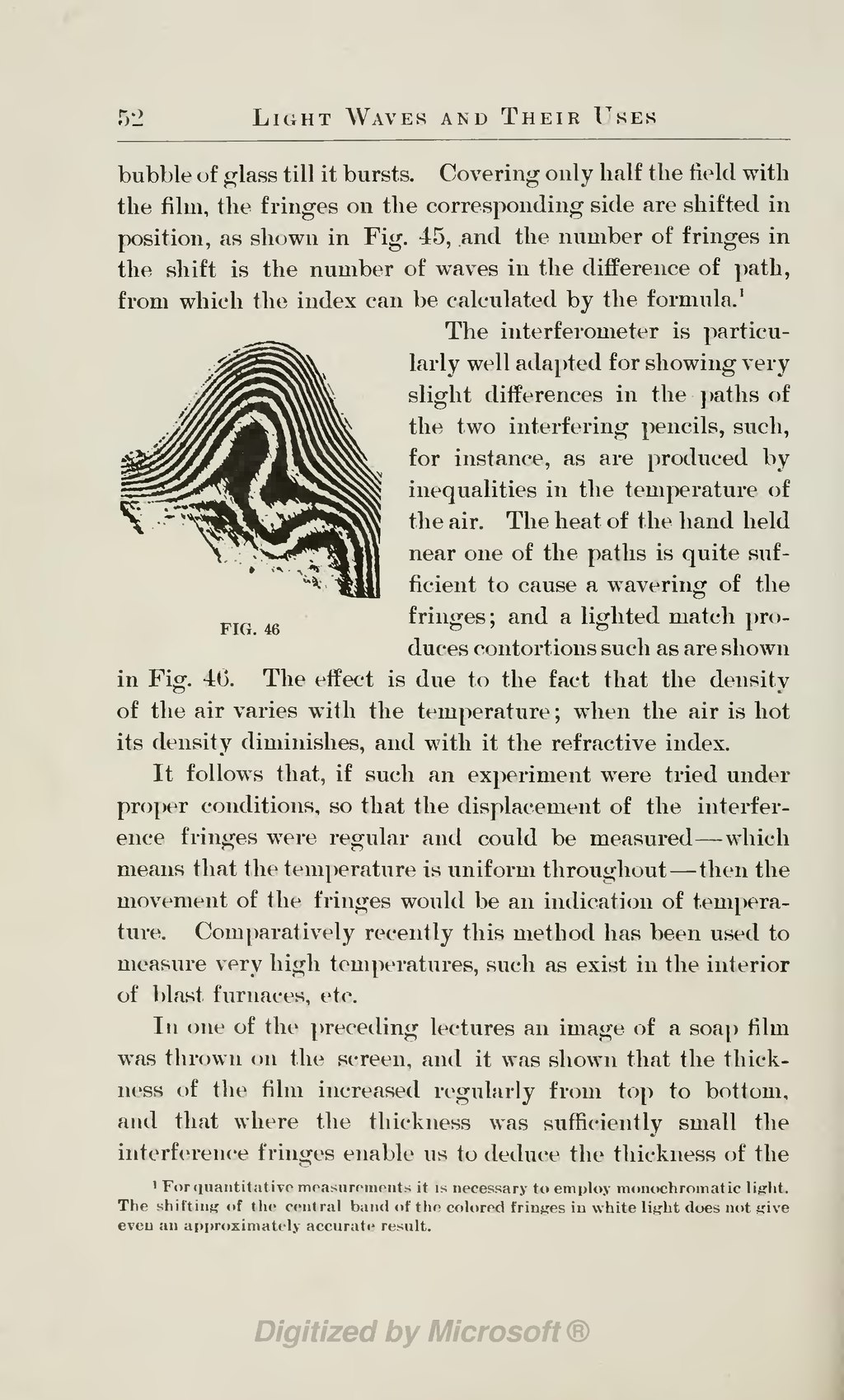bubble of glass till it bursts. Covering only half the field with the film, the fringes on the corresponding side are shifted in position, as shown in Fig. 45, and the number of fringes in the shift is the number of waves in the difference of path, from which the index can be calculated by the formula.[1]
 FIG. 46The interferometer is particularly well adapted for showing very slight differences in the paths of the two interfering pencils, such, for instance, as are produced by inequalities in the temperature of the air. The heat of the hand held near one of the paths is quite sufficient to cause a wavering of the fringes; and a lighted match produces contortions such as are shown in Fig. 46. The effect is due to the fact that the density of the air varies with the temperature; when the air is hot its density diminishes, and with it the refractive index.
FIG. 46The interferometer is particularly well adapted for showing very slight differences in the paths of the two interfering pencils, such, for instance, as are produced by inequalities in the temperature of the air. The heat of the hand held near one of the paths is quite sufficient to cause a wavering of the fringes; and a lighted match produces contortions such as are shown in Fig. 46. The effect is due to the fact that the density of the air varies with the temperature; when the air is hot its density diminishes, and with it the refractive index.
It follows that, if such an experiment were tried under proper conditions, so that the displacement of the interference fringes were regular and could be measured—which means that the temperature is uniform throughout—then the movement of the fringes would be an indication of temperature. Comparatively recently this method has been used to measure very high temperatures, such as exist in the interior of blast furnaces, etc.
In one of the preceding lectures an image of a soap film was thrown on the screen, and it was shown that the thickness of the film increased regularly from top to bottom, and that where the thickness was sufficiently small the interference fringes enable us to deduce the thickness of the
- ↑ For quantitative measurements it is necessary to employ monochromatic light. The shifting of the central band of the colored fringes in white light does not give even an approximately accurate result.
